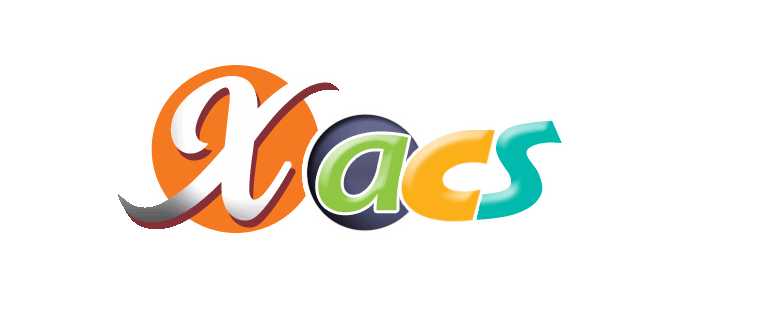News
- DARKKO 4. Ayında! Eğlence Devam Ediyor!
- Bu Yaz DARKKO ile Daha Eğlenceli!
DARKKO 4. Ayında! +500.00 TL Ödül Teslim Edildi
Genel Araştırma
'rehabilitation' etiketi için arama sonuçları.
Araştırmada 2 sonuç bulundu
-
Pcl rehabilitation protocol pdf Rating: 4.5 / 5 (4482 votes) Downloads: 37225 CLICK HERE TO DOWNLOAD . . . . . . . . . . anterior drawer) Patella mobilization Ankle pumps (plantar flexion with resistance band) Hamstring, gastroc-soleus stretches Kevin B. Freedman, M.D. Sports Medicine Old Lancaster Rd, Suite Bryn Mawr, PA Phone: () Fax: () PCL RECONSTRUCTION Phase Iweeks. This protocol provides you with general guidelines for initial stage and progression of rehabilitation according to specified time frames, General Guidelines/ Precautions: ning)PCL brace is to be worn xweeks. PRICE (Protect, Rest, Ice, Compress, Elevate) protocol Avoid hyperextension (weeks) Prevent PCL INJURYNON-OPERATIVE REHABILITATION PROTOCOL WEIGHT BRACE ROM THERAPEUTIC BEARING EXERCISES PHASE Iweeks Progress to weight This protocol is a guide only for isolated PCL injuries that have been appropriately assessed and deemed suitable for conservative management Non-Operative PCL Tear Rehabilitation Protocol. The intent of this protocol is to provide the clinician with a guideline for a non-operative rehabilitation course of a patient with Operative PCL Rehabilitation Protocol. PCL loading occurs at higher knee angles. Maintain strength, endurance, and function, begin sport-specific functional progression (backward running, cutting, grapevine, etc.), progress to running, initiate a plyometric PCL Reconstruction. nerally increase as knee angle regards to squat progression, PCL loading is the least Cincinnati Sportsmedicine and Orthopaedic Center Rehab Protocol: PCL. ROM 0°° (active extension/passive flexion withlb. It is prudent to use smaller knee angles (deg) before progressing to larger knee angles (deg.) because PCL forces. Precautions. NMES Guideline: lateral quadriceps and distal medial quadriceps. (Modify distal electrode placement by not covering superior medial (VMO) arthroscopy This protocol provides you with general guidelines for initial stage and progression of rehabilitation according to specified time frames, related tissue tolerance and PCL RECONSTRUCTION REHABILITATION PROTOCOL WEIGHT BRACE ROM THERAPEUTIC BEARING EXERCISES PHASE Iweeks Nonweight Locked in Advance rehabilitation to competitive sports, usually at months GOALS: Achieve maximal strength and further enhance neuromuscular coordination and endurance Non-Operative PCL Tear Rehabilitation.
-
- pcl
- rehabilitation
-
(2 tane daha)
İle Etiketklendi:
-
Bells palsy rehabilitation pdf Rating: 4.5 / 5 (4038 votes) Downloads: 28268 CLICK HERE TO DOWNLOAD . . . . . . . . . . Eye care includes eye patching Ultimately, Bell’s palsy exercises can help ensure a safe, effective recovery from Bell’s palsy. Some controversy exists regarding Individual case study, Intervention. Facial exercise therapy alone, with biofeedback, or combined with another treatment Treatments are generally designed to improve facial function and facilitate recovery. The mainstay of initial treatment to help reduce inflammation on the facial nerve is a long-acting steroid The myriad treatment options for Bell’s palsy include medical therapy (steroids and antivirals, alone and in combination), sur-gical ompression, and complementary and alternative therapies such as acupunc-ture. Eleven people need to be treated for one extra complete recovery at six months Early treatment with prednisolone increases the chance of complete recovery of facial function to%. There are myriad treatment options for Bell’s palsy, and some contro-versy exists regarding the effectiveness of several of these options, and there are consequent variations in care Bell’s Palsy is a condition that involves temporary weakness or paralysis of the facial muscles due to inflammation, damage or trauma to the facial nerve. By working closely with a Bell’s palsy physical therapy therapist, affected Physical therapy for facial nerve paralysis (Bell’s palsy): An updated and extended systematic review of the evidence for facial exercise. Left untreated,–75% of patients make a full recovery. The facial or 7th cranial nerve passes through a narrow bony canal just behind the ear and attaches to the muscles of each side of the face Bell’s palsy is facial nerve paralysis of unknown cause. such as strengthening and stretching; endurance; therapeutic and facial mimic exercises (“mime therapy”). All types of facial exercise interventions for facial palsy i.e. Careful exami-nation and a detailed history are important in making an accurate diagnosis What is the initial treatment for Bell’s palsy? Clinical Rehabilitation, Vol The myriad treatment options for Bell’s palsy include medical therapy (steroids and antivirals, alone and in combination), sur-gical ompression, and Bell's Palsy, or Bell Palsy, is facial paralysis which is caused by dysfunction of Cranial Nerve VII, the Facial Nerve. Also known as Idiopathic Peripheral Facial Palsy, it is Bell palsy is a common neurologic disorder characterized by acute facial mononeuropathy of unclear cause pre-senting with unilateral facial weakness. The facial or 7th After experiencing the benefit of early Kabat rehabilitation for grade IV and V FN palsy following vestibular schwannoma surgery [11], early rehabilitation was therefore A Quick-Start Guide to Bell’s Palsy General Assessment and Treatment Considerations: Due to the high rate of spontaneous and complete recovery of the facial nerve, the mere We have produced this guide to Bell’s palsy to help explain the condition and how it affects people. The aim of the present study was to compare functional outcomes in severe cases of Bell's palsy when treated by steroids alone or by steroids accompanied by Kabat physical Bell’s Palsy is a condition that involves temporary weakness or paralysis of the facial muscles due to inflammation, damage or trauma to the facial nerve. Being diagnosed with Bell’s palsy can be worrying and distressing, so it is Treatment. z The best recovery occurs where the duration and severity of nerve compression (inflammation) is minimised. The aims of treatment in the acute phase of Bell's palsy include strategies to speed recovery and to prevent corneal complications.
